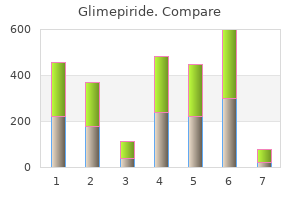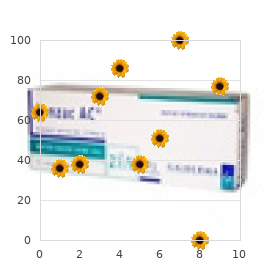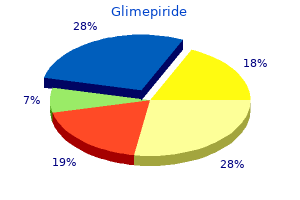"Purchase glimepiride line, managing diabetes through good nutrition".
By: C. Altus, M.B. B.CH., M.B.B.Ch., Ph.D.
Vice Chair, University of Texas Rio Grande Valley School of Medicine
Attended Baltimore public schoolsJacob Tome Institute; the Johns Hopkins University diabetic diet indian cheap glimepiride online, A diabetic diet usa glimepiride 3 mg free shipping. Majority Leader diabetes mellitus icd 9 codes order glimepiride, and Chairman metabolic disease 7 letters cheap glimepiride 2mg overnight delivery, Ways and Means Committee, 1951, 1952, and since 1955. Attended Hagerstown and Baltimore public schools; University of Maryland; Washington College, A. Former president, Maryland State Baseball Association; Amateur Baseball Association. Member, Cornwall Democratic Club; United Democratic Club of the 26th Ward; Our Lady of Pompei Holy Name Society. Attended Cecil County public schools; University of Richmond; Goldey Business College, Wilmington, Delaware; University of Maryland Law School. Attended Salisbury public schools; Salisbury State Teachers College; University of Maryland, A. Member, Veterans Housing Committee for Wicomico County; Civil Air Patrol; Junior Chamber of Commerce; Farm Bureau; Elks; Moose; American Legion; V. Member, Maryland and Baltimore Bar Associations; Knights of Pythias; Masons; American Legion. Member, Knights of Columbus; American Legion; 14th Air Force Flying Tiger Association; V. Member, Maryland-DelawareVirgima Farm Equipment Association; Central Maryland Implement Dealers Association. Former chairman, Convention and Tourist Committee, Cumberland Chamber of Commerce. President (1941-45), State Legislation Chairman (1945-48), Maryland Congress of Parents and Teachers. Member, Phi Kappa Sigma fraternity; Eagles; Elks; Masons; Shrine; Maplehurst Country Club. Attended Happens School, Breathedsville; Chestertown High School; Washington College, A. Past Chairman of Board of Directors and present National Committeeman, Young Democrats of Maryland. Member, Executive Board, Baltimore Urban League; Advisory Board, Department of Public Welfare; N. Instructor in American Government, Johns Hopkins University, 1950-58; instructor, Loyola College, University of Maryland, and University of Baltimore, 1952-58. Member, Research Staff, Commission to study the Structure of the Baltimore County Government, 1953-54. Member, National Association of Parliamentarians; Board of Directors, National Conference of Christians and Jews. Member, Young Republican Club; Chamber of Commerce; Carroll County Farm Bureau; National Independent Meat Packers Association; National Locker Association. Member, Cecil County Democratic State Central Committee, 1954-58; chairman, 1956-58. Member, New Marsh Wholesale Produce Market Authority, Baltimore City; Farm Bureau; Grange; Elks; Lions; Moose; National Rifle Association; Bush River Boat Club. Member, Berlin Chamber of Commerce; Berlin Lions Club; Sinepuxent Rod and Gun Club. Attended parochial and public schools in Baltimore; graduated, University of Maryland School of Pharmacy, 1937. Member, 1st District Democratic Club; South Anne Arundel County Democratic Club; Maryland and Anne Arundel County Bar Associations. Vice-chairman Maryland-National Capital Park and Planning Commission, 1949-51; executive officer, National Capital Planning Commission, 1951-54. Director, Charles County Farm Bureau, 1948-50; Southern States Cooperative, 1946-48. Member, Patapsco Democratic Club; Young Democrats of Baltimore County; Arbutus Community Association; Board of Directors, Community Association of Wynnewood; V.
Dramatic levodopa responsiveness of dystonia in a sporadic case of spinocerebellar ataxia type 3 diabetes 1 symptoms buy glimepiride 3 mg on line. Dystonia diabetes type 1 also known as trusted 2mg glimepiride, clinical lateralization diabetes signs and symptoms pdf 1mg glimepiride with mastercard, and regional blood flow changes in temporal lobe seizures diabetes medication v order glimepiride on line amex. Autosomal dominant adult neuronal ceroid lipofuscinosis: parkinsonism due to both striatal and nigral dysfunction. Cerebral calcinosis with late onset encephalopathy: unusual type of pseudopseudohypoparathyroidism. Uber eine eigenartige krampfkrankheit des kindlichen und jugendlichen alters (dysbasia lordotica progressiva, dystonia musculorum deformans). Gabapentin in orthostatic tremor: results of a double-blind crossover with placebo in four patients. Spontaneous involuntary disorders of movement: their prevalence, severity, and distribution in chronic schizophrenics with and without treatment with neuroleptics. Hemichorea after a striatal ischemic lesion: evidence of thalamic disinhibition using single-photon emission computed tomography: a case report. Chorea as a form of presentation of human immunodeficiency virus-associated dementia complex. Catatonic syndrome in acute severe encephalitis due to Borrelia burgdorferi infection. Low-dose mirtazapine: a new option in the treatment of antipsychoticinduced akathisia. Oromandibular dystonia in a patient with bilateral putaminal necrosis after methanol poisoning: an electrophysiological study. Persistent mirror movements: a clinical study of 17 children, adolescents and young adults. The frequency of reversible parkinsonism and cognitive decline associated with valproate treatment: a study of 364 patients with different types of epilepsy. Catatonic syndrome in a general hospital psychiatric population: frequency, clinical presentation, and response to lorazepam. Late-onset TaySachs disease presenting as catatonic schizophrenia: diagnostic and treatment issues. Neurological sequelae of cyanide intoxication the patterns of clinical, magnetic resonance imaging, and positron emission tomography findings. Reexposure to fluoxetine after serious suicide attempts by three patients: the role of akathisia. Clinical characteristics and predisposing factors in acute drug-induced akathisia. Hypertension, hyperekplexia, and pyramidal paresis due to vascular compression of the medulla. Spinocerebellar ataxia type 2 presenting as familial levodopa-responsive parkinsonism. Primary writing tremor: report of a case successfully treated with botulinum toxin A injections and discussion of the underlying mechanism. Familial tic disorder, parkinsonism, motor neuron disease and acanthocytosis: a new syndrome. Periodic catatonia: confirmation of linkage to chromosome 15 and further evidence for genetic homogeneity. Reversible dementia in idiopathic hypoparathyroidism associated with normocalcemia. Akathisia induced by necrosis of the basal ganglia after carbon monoxide intoxication. Reversible parkinsonism and asymptomatic hypocalcemia with basal ganglia calcification 26 years after thyroid surgery. Cervical disc prolapse with cord compression presenting with choreoathetosis and dystonia.
Purchase glimepiride 2mg without a prescription. Kidney disease dialysis and diet in diabetics: Dr Harshal Bhole.

Thinking about your own culture diabetes test hba1c buy glimepiride 2mg without prescription, what are some examples of ideas or objects that are considered "sacred"? Animism: a religious system organized around a belief that plants managing your diabetes lilly purchase glimepiride, animals diabetes 3 month average cheap glimepiride 4mg on line, inanimate objects blood sugar levels buy discount glimepiride 4 mg on-line, or natural phenomena have a spiritual or supernatural element. Cargo cult: a term sometimes used to describe rituals that seek to attract material prosperity. Collective effervescence: the passion or energy that arises when groups of people share the same thoughts and emotions. Cultural appropriation: the act of copying an idea from another culture and in the process distorting its meaning. Filial piety: a tradition requiring that the young provide care for the elderly and in some cases ancestral spirits. Millenarians: people who believe that major transformations of the world are imminent. Profane: objects or ideas are ordinary and can be treated with disregard or contempt. Prophet: a person who claims to have direct communication with the supernatural realm and who can communicate divine messages to others. Reincarnation: the idea that a living being can begin another life in a new body after death. Revitalization rituals: attempts to resolve serious problems, such as war, famine or poverty through a spiritual or supernatural intervention. Rite of intensification: actions designed to bring a community together, often following a period of crisis. Rite of passage: a ceremony designed to transition individuals between life stages. Sacred: objects or ideas are set apart from the ordinary and treated with great respect or care. Shaman: a part time religious practitioner who carries out religious rituals when needed, but also participates in the normal work of the community. She received a Master of Arts from Columbia University in the City of New York in Anthropology and has since been researching and teaching. Currently, Sashur is an instructor at Pasadena City College teaching Cultural and Biological Anthropology. In her free time, Sashur enjoys traveling the world, visiting archaeological and cultural sites along the way. She and her husband are actively involved in animal rescuing, hoping to eventually found their own animal rescue for animals that are waiting to find homes. Jack David Eller, Introducing Anthropology of Religion (New York: Routledge, 2007), 9. Bronislaw Malinowski, "Rational Mastery by Man of his Surroundings, " in Magic, Science, & Religion (New York: McGraw Hill, 1955). Emile Durkheim, Elementary Forms of Religious Life (New York: the Free Press, 1912). Charles Rycroft, A Critical Dictionary of Psychoanalysis (London: Puffin Press, 1995). Marvin Harris, Cows, Pigs, Wars and Witches: the Riddles of Culture (New York: Random House, 1974). Clifford Geertz, "Religion as a Cultural System, " in the Interpretation of Cultures: Selected Essays, ed. His work is cited in Alex Golub, "The History of Mana: How an Austronesian Concept Became a Video Game Mechanic" the Appendix 2 no. Kiefer, the Tausg: Violence and Law in a Philippine Moslem Society (New York: Holt Rinehart, 1972). Charles Ikels, Filial Piety: Practice and Discourse in Contemporary East Asia (Stanford: Stanford University Press, 2004.


Patients must be told that much will be expected of them but that blood glucose unit conversion mg dl mmol l glimepiride 3mg with mastercard, if they persist diabetes signs weight gain purchase glimepiride us, they will become sober diabetes type 1 is it genetic purchase glimepiride 2 mg free shipping. Alcoholics Anonymous meetings are available around the world diabetes type 2 need insulin buy discount glimepiride 1 mg on-line, and in the United States contact may be made by simply calling directory assistance in virtually any city. Naltrexone, given only to patients with normal hepatic function, is used orally in a dose of 50 mg daily, and p 21. Topiramate is used in total daily doses of approximately 100200 mg (Johnson et al. Disulfiram is begun in a dose of 500 mg daily, with the dose reduced to 250 mg daily after 1 or 2 weeks; patients should be given a graphic description of the toxic reaction that they may expect should they ingest even a miniscule amount of alcohol, and, given the potential toxicity of disulfiram, treatment is generally maintained for only a matter of months. Divalproex neither reduces the urge to drink nor the intoxication that occurs with drinking, but may, in doses similar to those used for alcohol withdrawal, reduce lingering withdrawal symptomatology. Out of naltrexone, acamprosate, and topiramate, all other things being equal, it is probably reasonable to begin with naltrexone. The place of divalproex is not as yet clear; however, if it has been used during treatment of alcohol withdrawal, and one can predict a lingering withdrawal, it is reasonable to continue it. Although these medications may be helpful, patients must not be allowed to think that their use can substitute for involvement in psychosocial treatments. The overall role of the physician in the treatment of alcoholism per se is generally limited to treatment of some of the complications of alcoholism. As a general rule, in prescribing medications for these or any other conditions, potentially intoxicating drugs, such as benzodiazepines or opioids, should be avoided as they may trigger off a desire to drink; exceptions to this rule are few. Alcoholism is a chronic disease and hence relapses are to be expected; these occur most frequently in the first 6 months of treatment. This classification is useful as it allows one to make a rough prediction as to when withdrawal, withdrawal seizures, or withdrawal delirium is likely to occur. The barbiturates, meprobamate, and chloral hydrate, once commonly abused, have been supplanted by the benzodiazepines, among which alprazolam, lorazepam, and diazepam are most popular. Clinical features As indicated, the clinical features of sedativehypnotic use are similar to those of alcohol, and thus one may see sedativehypnotic intoxication, blackouts, tolerance, withdrawal, withdrawal seizures, and withdrawal delirium. When mild, sedativehypnotic intoxication with barbiturates (Curran 1938, 1944; Isbell et al. With moderate intoxication, reaction time is slowed, lethargy and drowsiness appear, and patients often develop nystagmus, dysarthria, and ataxia; falls may occur, with possible head injury. With severe intoxication stupor or coma may occur, with respiratory depression and death. Sedativehypnotic blackouts are quite similar to those seen with alcohol; although possible with long-acting Table 21. Tolerance may appear with long-term use and at times may be quite remarkable: some patients may end up taking hundreds of milligrams of diazepam daily, with little or no evidence of sedation. The onset of the withdrawal syndrome varies according to the half-life of the agent: roughly speaking, for shortacting agents withdrawal starts in less than a day; for intermediate-acting agents, 23 days; and for long-acting agents, 26 days. Roughly speaking, for short- and intermediateacting agents, symptoms peak within 13 days and persist for 12 weeks, whereas for long-acting agents the peak arrives in 57 days and the syndrome may persist for up to 2 or 3 weeks. As with alcohol withdrawal, some patients may experience lingering, low-level withdrawal symptoms for weeks or months after withdrawing from benzodiazepines (Ashton 1984; Shader et al. In addition to this typical picture of withdrawal, a recent report described the occurrence of stuporous catatonia as a withdrawal phenomenon of benzodiazepines (Rosebush and Mazurek 1996). Sedativehypnotic withdrawal seizures typically occur within the context of withdrawal symptomatology and, although these may occur with benzodiazepines. Sedativehypnotic withdrawal delirium, noted with benzodiazepines (such as alprazolam [Levy 1984; Zipursky et al. In the natural course of events, the delirium tends to clear in anywhere from days to a couple of weeks. Sedativehypnotic abuse is said to occur when patients continue to seek intoxication despite experiencing blackouts and social or legal consequences, and the onset of addiction is heralded by the development of craving, tolerance, and withdrawal phenomena, such as a withdrawal syndrome, seizures, or delirium. Presumably, with prolonged use, down-regulation of these receptors occurs, with the consequent development of tolerance and withdrawal phenomena. Differential diagnosis Sedativehypnotic intoxication is clinically indistinguishable from alcohol, isopropyl alcohol, and methanol intoxication except for the fact that sedativehypnotic-intoxicated patients do not have an odor of alcohol on their breath.


